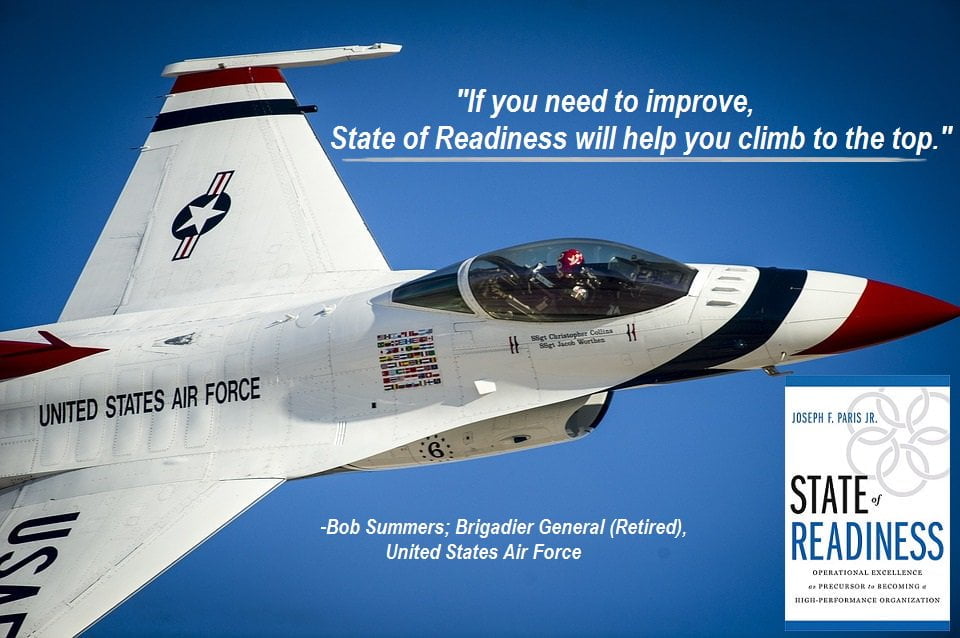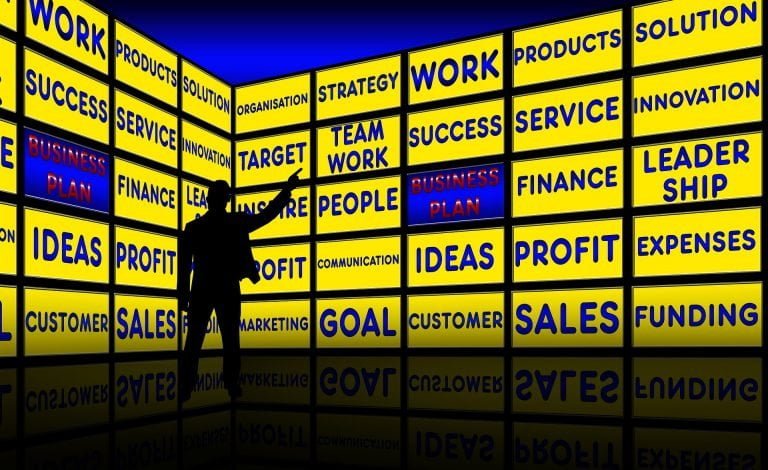You Are Unique, but Not Special
In my article, “Build Organizational Capacity and Capability – For Free”, I listed several root-causes for training and education programs reaching a “stall speed” and a detailed approach for avoiding it. Among the root-causes listed were; time, expense, work/learning balance, scalability, retention rate, and atrophy.
But there is considerable risk to the program even prior to its launch, and that involves the creation of a proper curriculum and learning environment.
“Le mieux est l’ennemi du bien,” meaning, “The best is the enemy of the good.”
Voltaire
Case Study; I want to protect the identities of the company and those involved, so I won’t name the company or the industry they serve. I will disclose that the company is located within the United States and has less than 10,000 employees and independent contractors. I will also stipulate that the company absolutely does not create curriculum or learning platforms – and has no experience in doing so. It’s not what they do.
My involvement with them started when a Senior Vice President of the company first contacted me in 2015 regarding the creation and launch of an Operational Excellence program. I had several conversations with the leadership team, including the CEO.
They were convinced they were special; that the challenges they faced were special, their needs to address these challenges were special, that the training and education requirements were special, that the way they delivered the training and education was special, and that their program had to be special – developed nearly entirely from scratch.
In 2016, the Senior Vice President departed the company – having made no tangible progress in developing their Operational Excellence program whatsoever.
I remained in touch and monitored the company’s efforts to launch an Operational Excellence program – which remained largely dormant and with no obvious movement until late in 2017, when I learned a search for a new person to be the Director of Operational Excellence had been initiated.
The new Director, a person quite capable and knowledgeable of the disciplines involved in Operational Excellence, started in 2018. Soon after their being hired, I queried the Director as to the intent, approach, and resources involved in the Operational Excellence program and was stunned to learn they were it – the only resource – and that the company still intended to develop the curriculum to train and educate the staff internally; from nearly scratch. And “nearly” is being generous. They admitted they had “only a few modules” created, and those were rather dated.
I asked the natural follow-up questions as to how many resources they were going to dedicate to updating the existing modules and creating rest of the custom curriculum – and also considering their present workload, how much time these resources had available for the effort. The response was, “It’s just me” and an emphatic “None” to the time available to develop it.
That the assignment was accepted by the Director knowing (hopefully) full well that it could never be delivered under the parameters given is the very definition of “being set-up for failure”; having responsibility and accountability without authority.
Here’s your sign…
A few months go by, and the Director lets me know that they are considering the custom development of their own learning platform to support the training and education needs of the company.
Ooof…
They are no closer to having a successful (any?) Operational Excellence program now, in 2019, as they were back in 2015. And, unless they dramatically change their approach, they will be exactly where they are now in each and every subsequent year.
And of course, when the effort inevitably fails, as it must, the senior leadership will make the claim that “Operational Excellence failed” rather than place the blame where it should be placed – with the senior leadership themselves.
Unique, but Not Special
Certainly, the company was and is unique. Every company is unique in its circumstances; their offerings and marketplace, the combination of internal challenges they face, the resources available, the external business factors which might be influencing them, where they might be on the business cycle, and so on.
But they were not, and are not, special – and neither are you.
I have picked on this one company’s journey as an example of what not to do and why. But they are not alone – they certainly are not alone.
I have witnessed it time and again; companies investing (squandering) good money in developing their own “whatever” with their own resources rather than just buying the 95%+ fit off the shelf. Almost always (there are few exceptions) if the effort does not fail outright, the end-results cost more, does less, and has a far greater on-going cost of ownership than buying off the shelf would have ever had.
So, what can be done to get a training and education program launched quickly, economically, efficiently, and effectively?
Start with understanding what the core competencies of your business are, and what they are not. Unless you are going to make creating curriculum and learning platforms a core offering of your company, seek an off-the-shelf solution.
There are many sources of curriculum and learning platforms, so I will not list them here along with the pro’s and con’s. If you wish, you can contact me here and I would be happy to discuss your aspirations and share my experiences with you. But what I will do is offer guidance, specifications, and considerations in selecting the best fit for you.
Curriculum: Not just a collection of books and PowerPoint decks; a proper curriculum is structured and organized with specific outcomes in mind. It should be a journey from which a student’s knowledge builds incrementally from the previous lessons. To be successful, the student needs facilitation and collaboration with fellow students to ensure the comprehensive intent of the lessons is learned. A purely self-study environment will convey the raw knowledge, but there lacks the opportunity to truly evaluate the depth and breadth of the material was learned. Some characteristics of a quality curriculum include;
- Robustness; The materials should be complete in the subject. Not just that each of the modules exist, but they exist in a comprehensive form covering all the important aspects of a subject.
- Standardized; The materials should be standardized in structure so that a cadence from one module to another can be achieved and metrics can be established – and in form so that there is a familiarity from one module to the next. You don’t want your curriculum to look like you found a bunch of PowerPoints on the internet and cobbled them together.
- Configurable; The curriculum should be configurable so that it supports the desired outcomes of the course – outcomes that must be established prior to offering the course.
- Customizable; Although a proper off-the-shelf curriculum will deliver the vast majority of the knowledge you may wish the student to learn, you will want to have the ability to augment the materials over time to make the curriculum your own. Certainly, there should not be any “code cutting” involved, just the addition of materials.
- Evaluations; The curriculum needs to have embedded, but customizable, evaluations so that student progress can be determined. As the curriculum is standardized for the given subject across all students, the evaluations will also illuminate weaknesses in the curriculum itself or the way it is being delivered.
- Maintained; Curriculum needs to maintained for updates to, and expansions of, the knowledge being taught. Without maintaining the curriculum (which requires considerable levels of effort), the material will become obsolete.
- Affordable; Certainly, the acquisition and use of the curriculum must make financial sense and the likelihood of custom curriculum costing less than off-the-shelf is nil.
Learning Platform: From my previous article, “Build Organizational Capacity and Capability – For Free”, I detail the significant and tangible benefits of deploying and delivering your curriculum using an Integrated (Blended) Learning approach. As such, a learning platform and environment is required for its delivery.
- Hosted; To avoid having the expense of acquiring and maintaining the technology infrastructure, the learning platform must be a hosted solution, using a Software-as-a-Service (SaaS) model. Of course, a hosted solution should have proper support protocols to respond to any issues that may arise.
- Robust; The delivery of the curriculum will only be as good as the learning platform, so robustness is important; downtime needs to be near nil and the speed of navigating the system and serving the content must be fast.
- Secure; Since you will (probably) want to augment the curriculum with some of your own materials, you will need to ensure the platform is secure for your deployment.
- Anywhere and Anytime; An Integrated Learning model means that the student should be able to access the materials anywhere the student might be (provided there is access to the internet) and at any time of the day or night.
- Any Device; With the wide range of devices that are available – be it desktops, tablets, mobile devices, and so on – you don’t want to have to require a specific device or operating system to access the curriculum.
- Cyber “Office Hours”; Since almost none of the teaching by the facilitator in an Integrated Learning model is done physically face-to-face, your learning platform solution should have the ability to schedule one-on-one time with the instructor.
- Recorded Lectures; And since life sometimes gets in the way of learning, the learning platform solution should provide for the recording of live-lectures in case a student misses a lecture or wishes to review. Of course, the recordings are only available to those students allowed access and not on a public YouTube feed.

“A good plan violently executed today is far and away better than a perfect plan next week.” –
George S Patton
When I was writing my book, I came to the “proof-reading” part of the process. My book was approximately 80,000 words long. And I swear there were 95,000 edits. It took me an entire day to review the edits on the first six pages – I only had 398 pages to go. Ooof…
That night, I had a revelation. And I started the next day by opening up the document and hitting the “accept all” button.
My figuring was this; the proof-reader proof-reads for a living – that is what they do. I am not a proof-reader and no amount of training me will ever get me to the level of proof-reading they possess – certainly it would take years.
After I accepted all, I printed out the manuscript. As I had a copy of the manuscript that I had sent them, I decided to just read the proof-read manuscript end-to-end. If something looked wrong, I could compare it to the previous and make a reconciliation. My book has four parts. I was able to complete a part a day. It was done quickly and as painlessly as possible.
This is the lesson for you.
Understand that time is the enemy. And chasing and expecting perfection from the start is a fool’s errand. Also understand that what you can’t do – whether due to a lack of time, talent, or resources – is a lot. But that it still needs to get done – and done efficiently (great speed with a business investment that makes sense) and effectively (that it successfully accomplishes the mission objectives).
So let someone who is expert at developing and maintaining the curriculum you need, and someone who is expert at developing and maintaining learning platforms, do their things. After all, that is what they do, and they can do it so much better than you.
And you get to be free to do what you do best – leveraging your core capabilities. And in this case, it is to drive value by delivering a successful learning program to the employees in your company.
About the author
Paris is an international expert in the field of Operational Excellence, organizational design, strategy design and deployment, and helping companies become high-performance organizations. His vehicles for change include being the Founder of; the XONITEK Group of Companies; the Operational Excellence Society; and the Readiness Institute.
He is a sought-after speaker and lecturer and his book, “State of Readiness” has been endorsed by senior leaders at some of the most respected companies in the world.
Click here to learn more about Joseph Paris or connect with him on LinkedIn.









